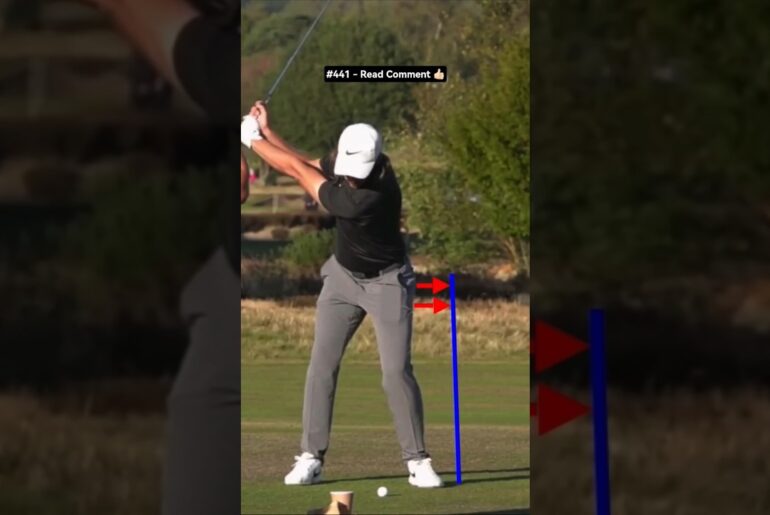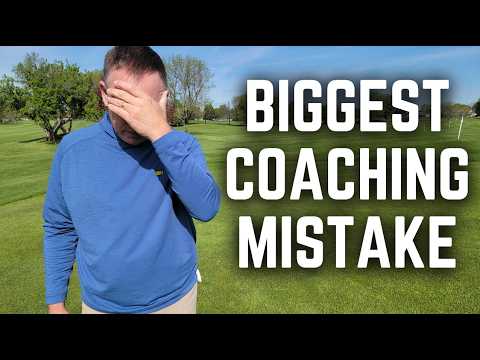Ever felt confused on the golf course because you don’t know the basic rules? You’re not alone! As a fellow golf tragic, I’ve been there too – standing over a ball wondering if I can move it, how many strokes that penalty actually costs me, or what the heck I’m supposed to do when my ball lands in a water hazard.
In this video, I break down the essential golf rules every beginner needs to know to actually enjoy their round instead of constantly second-guessing themselves. We’ll cover the fundamentals that will save you strokes, speed up your play, and help you avoid those awkward moments when you’re holding up the group behind you.
What you’ll learn:
✅ Basic scoring and stroke counting
✅ When and how you can move your ball
✅ Water hazards and penalty areas explained
✅ Out of bounds rules made simple
✅ Proper etiquette that keeps everyone happy
✅ Common beginner mistakes to avoid
Whether you’re brand new to golf or just want to brush up on the rules, this guide will give you the confidence to step onto any course knowing you won’t embarrass yourself. Trust me, understanding these basics will make the game so much more enjoyable!
Got questions about specific situations? Drop them in the comments below and I’ll do my best to help out a fellow golfer.
Don’t forget to subscribe for more golf tips, course vlogs, and the occasional disaster story from this golf tragic’s journey around the course!
#GolfRules #GolfForBeginners #LearnGolf #GolfTips #GolfBasics
And don’t forget to tell us about your golf and complete the ‘Golfers Survey’ at https://golfsalecentral.com.au/survey/
Need golf equipment? Visit the Golf Shop at https://golfsalecentral.com.au/shop/ – Australia only
A Study in Golf – YouTube Not subscribed to keep in touch? Click Here – / @astudyingolf-711
#golf #golfer #golfswing
How to play golf. Are you new to golf? Curious about the game and what’s with all the different clubs? Do you want to understand scoring or the rules of golf? Maybe have a work function or around with your friends. You want to know some basics so you don’t get laughed at? If that’s you, then stick around and I’ll have the answers you need. Keep watching till the end. I’ll also give 10 beginner tips that I wish I knew when I was getting started. The objective of the game of golf. Hit the ball from the T- box and get it into the hole on the green in as few a number of shots as possible. Simple as that. Let’s take a quick segue into golf terminology. The green is the closely mowed grass around the hole and the flag. The cup, the final hole where the flag sits. T or T box where you hit the ball from at the start of each hole. T is also what you sit a ball on at the start. Fairways are the medium mode grass area that links between the tea box and the green. Divots are holes dug into the ground by your club when hitting the golf ball. You also have the sandy areas called sand traps or bunkers. Water hazards such as lakes, dams, or creeks, and out of bounds areas, which are basically areas not part of the playing field, usually designated by a red line or red stakes. What to wear for golf. If you go into a public golf course, you often get to wear what you’d like. But I’d suggest athletic wear that’s suitable for the weather conditions. But if you go into a private golf club, they’ll most likely have a dress code. Smart dress pants or shorts with a belt, college shirt, and golf specific shoes are appropriate. Now, we’ll talk about the gear. Golf equipment for golf. Golf clubs, golf balls, teas, a glove, and a golf bag. If you don’t want to carry your clubs and bag, you can also use a golf buggy or trolley or drive a golf cart. What’s with all the different clubs? Just a few things to mention. As you see, the clubs are of various lengths. It’s usually the longer ones that are more difficult to hit. The rules say you can have a maximum of 14 clubs. That’s including the putter, but you can have less. So, you don’t have to take or use them all. Now, let’s start with the club that I’m sure many of you know if you’ve ever been to mini golf or putt putt parties, the putter. [Applause] The putter is the last club you’ll use to hit across the green into the cup. And a quick tip on using the putter, you don’t always have to be on the green to use the putter. If you have flat grass or even ground air around the green, the easiest way is to grab your putter and knock the ball on. Staying on the ground is usually safer than going in the air. Now we move on to the irons which we’ll discuss in two groups. Wedges. Oh no, not wedgies. Wedges are the clubs with most loft. That’s another term I didn’t mention earlier. Loft. Loft is the angle the face of the club is lent backwards. The more loft, the higher ball goes up, but the less distance it travels. My wedges consist of a pitching wedge stamp with a P, a sand wedge stamp with an S, and I also have a 54° which has a little more loft. Here I hit a wedge into the net. See how high up the net it actually goes. Quick tip, don’t get in the habit of leaning back to get the ball up in the air. Let the loft of the club get the ball up. You use the wedges when you want to get over something such as water or sand or maybe bushes or a rough section of grass. You won’t go far, but you have the best chance of getting over the problem. Wedges are usually for shots between 30 yards to 100 yards. Next, we move on to irons or the rest of the irons. In my bag, starting with the 9 iron, working up to a 4 iron, you get progressively less loft and slightly longer clubs. I’d suggest for starters you steer clear of anything above a five iron, five, fours all the way up to a one as they are most difficult to hit. Here I hit a six iron into the net. See how it only hits halfway up the net compared to the wedge earlier. I ends are usually for shots between 100 yards to 200 yd. From irons we move on to woods called woods because that’s what they originally made of. Big intimidating looking clubs in the set. The most clublike. The largest wood called the driver used to be called a onewood. Mainly hit off the tea box with the ball on a T. The driver is for hitting the longest distance. Anything from 180 y up to 300 y. In my set, I also carry a 3-wood, a 5wood, and a four hybrid. The fivewood and the hybrid are generally easier to hit than the driver and the 3-wood. if you’re having trouble with those. Fairway woods and hybrids are usually for shots between 150 yards to 220 yards. How to score in golf. Every hole has a par, which is the target number of strokes a good golfer is expected to take to finish it. Holes are usually a par three, par 4, or par five. Let’s use the most famous par three in golf, the 12th hole at Augusta National, as an example. A good golfer hits their first shot off the tea and it will land on the green. You then get two putts to get it in the hole and that is par. Three shots for a par three. The most famous par four in golf is arguably the 17th at St. Andrews, the road hole. A good golfer hits their first shot off the tea over the hotel and it will land on the fairway. The second shot is from the fairway onto the green. You then get two putts to get it in the hole and that is par. four shots for a par four. The most famous par five in golf would have to be the 18th hole at Pebble Beach. A good golfer hits their first shot off the teen and will land on the fairway, but usually not close enough to hit the second shot onto the green. The third shot then lands on the green. You get two putts to get it in the hole and that is par. Five shots for a par five. This brings us to the next two common words in golf scoring. Birdie and bogey. A birdie is a great thing. It means you took one less shot than par. So hitting a three on a par four is a birdie. A bogey is the opposite. Means you took one shot over par like hitting five shots on a par four. A double bogey is two shots over par. A triple bogey, three shots over par, etc. So if someone asks how you doing, you don’t have to give your whole life story. You can just say I’m tracking a few over par. And you’ll fit right in. Penalties. This is the bad side of scoring. If you go out of bounds in the water or lose a ball, you will get one penalty stroke to add to your score for that hole. You drop a new ball either back where you hit it from or the last point before the penalty zone and continue playing. You then add up the number of shots you took for a hole, including any penalty strokes, and write that on your scorecard. At the end of the round, each player adds their score for each hole, and the lowest total wins. The three unbreakable rules for a casual round of golf. Okay, let’s talk about rules. Don’t worry, we’re not going to pull out the official rule book. For a casual game, you only really need to know three things to keep it all fair and fun. First, tee it up in the right spot. At the start of every hole, you have to hit your first shot from between two tea markers. You can put your tea anywhere in the box they create and even go two club lengths behind them, but you can never ever tee it up in front of them. Second, play the ball as it lies. This is probably the biggest rule in golf. Wherever your ball stops, that’s where you have to hit it from next. You can’t just kick your ball into a better spot with your foot or start snapping branches off a tree because they’re in your way. You have to play the course as you find it. Third, understand the order of play. On the very first hole, anyone can go first. After that, the person with the best score on the last hole has the honor and gets to tee off first. For every shot after that, the player who’s farthest away from the hole hits next. But honestly, most casual games run on ready golf. That means if you’re ready to hit and it’s safe to do so, go for it. It keeps the game moving as no one wants to stand around all day. The number one etiquette tip to not annoy everyone. If you forget everything else I’ve said, please remember this one thing, keep up. The absolute biggest frustration in golf is slow play. Be ready to hit when it’s your turn. While other people are hitting, you should be figuring out how far you have to go and which club you’re going to use. Another huge part of golf etiquette is being quiet and still when someone else is hitting their shot or putting. Golf takes a lot of focus and it’s easy to get distracted. When you’re on the green, try not to walk on the line between someone else’s ball and the hole. It’s a big no no. Finally, just be a good guest on the course. If your swing digs up a chunk of grass, that’s called a divot. Put it back. If your ball leaves a little crater on the green, fix it. Break the bunker after you hit out of it. The goal is to leave the course just as you found it, if not better. Now, we come to the 10 vital beginner tips. These are the things I wish I knew before I went out and first started playing golf. First one is keeping your leading arm straight. Use it like a guide stick so you always hit the same spot every time. I still struggle with this and break, but it help with your consistency. If you can get doing it right at the start, it’ll really help things along. Secondly, hitting the ball first, then the ground is what you’re actually supposed to do. Keep your head still and keep looking at the ground even after you’ve hit the ball. I still remind myself to look for the divot. That way, you don’t get in the habit of, “Oh, where’s the ball gone?” and you hit it poorly. Let the other people you’re playing with watch where your ball goes. You just focus keeping your head in the same position. You don’t need to buy the most expensive golf balls. Use cheap or used golf balls and take plenty of them and plenty of TE’s. Make sure you grab a sand bucket at the start of your round and get in the habit of filling your diffs as you go around the course. If you’re having trouble with a longer club, whether it be a driver or a longer iron, you don’t always have to grip it at the end. You can make it shorter by gripping it down. Sometimes that makes it easier. Now, what I would call and a lot of other players would call the Goldilocks club is the seven iron. Start with the seven iron to build up your confidence. Another thing is don’t over swing both your back swing and your follow through. That’s where you tend to lose form. Your arm moves, your head moves. Keep it simple. Short back swing, short follow through. Straight arm to straight arm. Hitting it straight is better than trying to hit it long at the start. And further to the last tip, don’t try and swing too hard or fast. Relax. Let the club swing like a pendulum. And if you’re still a bit anxious, just start with using three clubs. Your seven iron, your putter, maybe a fivewood. Keep remembering. Start small. Small swings, small targets. Just keep moving the ball forward. Relax and have fun. And that’s it. your entire cheat sheet to looking like you belong on the golf course. Remember to follow the three simple rules. Te it upright, play it where it lies, and know whose turn it is. And most importantly, keep up the pace, and be respectful. Everyone was a beginner at some point. So go out this weekend, focus on having a good time, remember the three fundamentals, you’ll not only survive the round, you’ll probably have a blast. And if you want to see more of studying golf content, I highly recommend you click on this video







